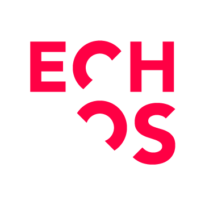In Design Thinking, ideation is a process in which ideas and concepts are created in order to solve one specific problem at hand. In corporate environments, these would be problems employees and clients are facing daily.
For the ideation process to be successful, it is crucial that a variety of people – from different departments, with different backgrounds – are put together with Design Thinking facilitators, that will guide their idea flow to the best direction.
Ideation is the fourth step in the Design Thinking double diamond method:
Here is a practical list with four golden rules to make the most out of your ideation phase:
Rule Number 1: There Is No Such Thing As A Bad Idea
The key to a good ideation session is that every person in the session feels comfortable to contribute with their ideas. The easiest way to ensure everyone is at ease is to establish from the outset that any sort of judgement should stay outside the door when people enter a room to design think. The ideation session isn’t a place for negative comments, for phrases that start with “yes, but…” and for turning up the nose at anyone else’s ideas. Ideas are like puzzle pieces: at first, they may seem unrelated and irrelevant to one another, but at the end, they will all match up somehow.
Rule Number 2: Capture Everything
In the heat of the moment, brilliant ideas can get lost. Don’t let them. Write every idea down. A lot of ideation sessions take place during routine team meetings, without people realising that they are ideating. Writing ideas down during a mundane meeting will potentialise the chance of these ideas coming back up.
Design-Thinker Tip: Write one idea at a time using post-it notes and a sharpie. The best way to organise all of your ideas is to write one idea per post-it note in an objective, not-too-wordy kind of way. Oh, and drawings sometimes help too!
Rule Number 3: The Hybrid Brainstorming Session
Research has shown that combining group brainstorming sessions’ results with individual brainstorming sessions’ results can help create more and better ideas. The best way of doing a “hybrid brainstorming session” is to do it first on your own and then with a group. When the first brainstorming session is in a group, naturally bigger personalities and louder voices will be mostly heard – which makes the brilliant ideas from the timid people in the room go to waste. The exercise of thinking alone and later bringing the ideas to a group to share and combine is very enriching to the ideation process.
Rule Number 4: Quantity Over Quality (That’s Right!)
The old saying “quality over quantity” doesn’t apply to the ideation process. Nothing cuts a creative flow as much as someone trying to think if an idea is good or if it is feasible. Selecting the right ideas is important, of course, but picking the best ideas shouldn’t happen during the ideation process. Ideating is all about volume; the more, the merrier.
*This article was translated and edited by Rani Ghazzaoui Luke.
—
If you’d like to start an innovation journey in your company, you can check out our in-house course offering as well as download for free our Design Thinking toolkit by clicking here.
If you’d like to see what are the upcoming courses in your region, visit our website.
If you have a special project and would like to use Echos’ consultancy services, you can send us an email.




